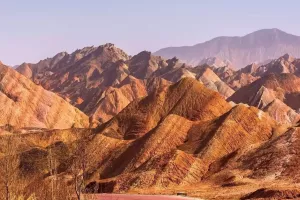Mountains are crucial to life. Whether we live at sea level or the highest elevations, we are connected to mountains and affected by them in more ways than we can imagine… The UN General Assembly designated 11 December as International Mountain Day in 2003 as an opportunity to create awareness about the importance of mountains to life, and to build partnerships that will bring positive change to the world’s mountains and highlands.
Mountains are crucial to life, providing most of the world’s freshwater, harbouring a rich variety of plants and animals, and providing a home to one in ten people. Here are some interesting facts about mountains.
1. Mount Everest is the World’s Highest Mountain
Mount Everest has the “highest elevation above the sea level,” which is why it is called the highest point on Earth. The mountain’s epic height was first identified in 1856 by a team escorted by a British surveyor – Sir George Everest. The official height of Everest is calculated to be 8,848 meters (29,028 feet).
2. There’s an interesting way to measure mountains
How do you measure a mountain? While many will base at ground level, plenty actually base below the water. That’s why, in many cases, people measure mountains and peaks from water level upwards. It’s seen as the fairest way to compare peaks.
3. K-2 Is Also Known as the Savage Mountain
K-2 is the world’s second-highest mountain in the world, situated on the China-Pakistan border. It was named “the Savage Mountain” after George Bell (an American explorer) climbed the mountain in 1953 and said, “It’s a savage mountain that tries to kill you.” Of all the highest mountains in the world, K-2 is indeed the deadliest.
4. New Zealand Features the World’s Longest Mountain Name
The name holds the Guinness World Record and consists of 85 characters. The name of this mountain is Taumatawhakatangihangakoauauotamateapokaiwhenuakitanatahu.
When translated into English, the word means “the place where Tmatea, the man with the big knees, who slid, climbed, and swallowed mountains, known as – landeater – played his nose flute to his loved one”.
5. 20% of the world is up a mountain
Believe it or not, around a fifth of all land on planet Earth is thought to be mountainous. That’s why you’ll find peaks and valleys as far spread as Scotland, France, China, South Africa and beyond. If there’s one thing most territories have in common across the globe, it’s the presence of mountains. As well as covering much of the Earth’s surface, mountains are said to be home to up to 10% of the world’s population.
6. Mountain Goats are Adept to Climbing Mountains
Also known as the Rocky Mountain goat, this mammal is indigenous to North America. Mountain goats have cloven hooves and toes that enable them to cover wide steps. Plus, the bottom of each toe has a hard pad that gives them a solid grip. It is believed that mountain goats can climb mountains better than even the most skilled human mountaineers.
7. Mountains have big effects on the weather
Mountains have a huge impact on the weather around us and can even affect how and where storms may travel. Therefore, a mountain range may act as a brilliant weather shield or refuge in some climates.
8. Mountains Exist Under the Sea as Well
There are enormous mountains underwater. The most famous undersea mountain is the Mid-Atlantic Ridge while the highest ocean mountain is Mount Vema in the South Atlantic Ocean. Undersea mountains were formed as a result of volcanic activity under the sea. After these volcanic eruptions were over, the mountains (which were first above land) were submerged in the oceans. Most of these mountains carry a lot of nutrients and prove to be a rich source of food for various sea creatures.


